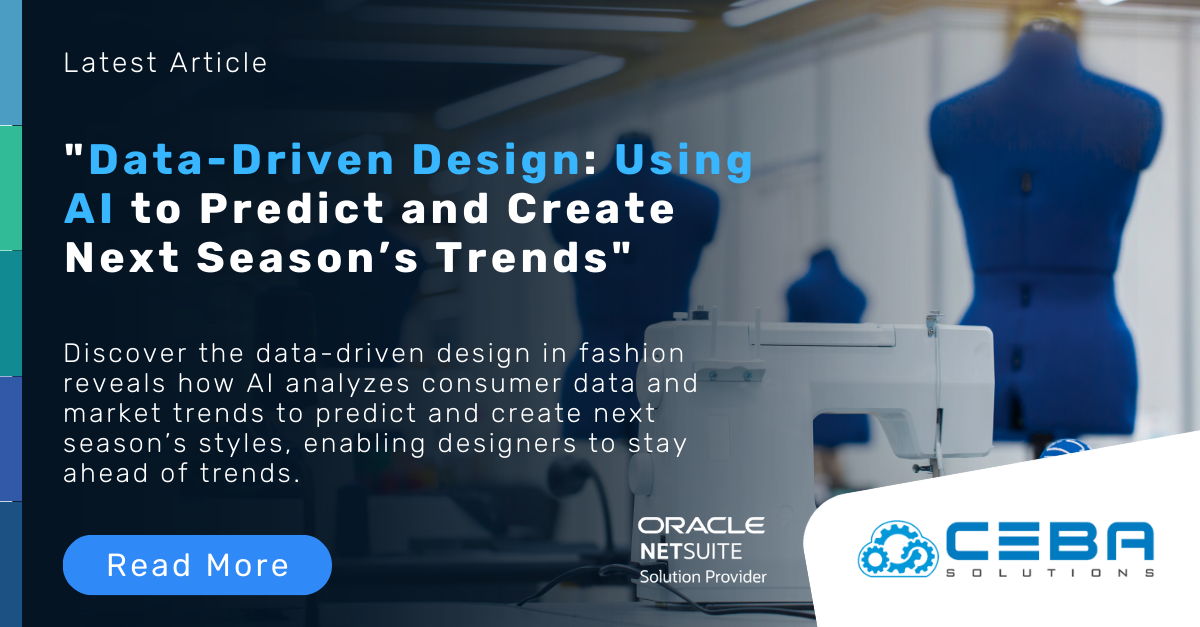
Fashion’s Digital Transformation: Embracing AI and Machine Learning
Fashion’s Digital Transformation: Embracing AI and Machine Learning
The fashion industry is undergoing a significant digital transformation, with Artificial Intelligence (AI) and Machine Learning (ML) at the forefront of this revolution. These technologies are not just reshaping existing processes but are also opening up new possibilities for innovation in design, manufacturing, marketing, and customer service. This article explores how AI and ML are driving the digital transformation in fashion, enhancing efficiency, creativity, and customer engagement.
1. AI in Fashion Design
AI is transforming fashion design by enabling designers to leverage data-driven insights into consumer preferences, seasonal trends, and even color predictions. AI tools can also generate innovative design patterns, assist in fabric selection, and simulate how fabrics will look and behave in different designs.
Benefits:
- Enhanced Creativity: AI algorithms provide designers with new perspectives and ideas, pushing creative boundaries. Designers can experiment with various design elements and combinations that may not have been considered before.
- Data-Driven Design Decisions: Helps brands create more commercially viable collections by aligning designs with consumer data insights. This ensures that the products are not only innovative but also have a higher likelihood of success in the market.
Real-World Application:
For example, AI-powered platforms like IBM's Watson have been used by designers to analyze vast amounts of fashion data, helping them predict future trends and consumer preferences. This has enabled designers to create collections that are both trendy and tailored to the target audience's tastes.
2. Machine Learning for Trend Forecasting
Machine Learning analyzes vast arrays of data from social media, runway shows, current events, and previous sales to forecast future fashion trends. This predictive power allows brands to stay ahead of the curve and stock or design what consumers are more likely to demand.
Benefits:
- Anticipatory Product Lines: Enables brands to plan and produce more accurately, reducing the risk of unsold inventory. This proactive approach helps in aligning production schedules with market demand.
- Dynamic Pricing and Marketing: Optimizes pricing strategies and marketing campaigns to align with emerging trends. This ensures that promotional efforts are timely and relevant, increasing their effectiveness.
Real-World Application:
Retailers like Zara use ML algorithms to analyze customer data and social media trends, allowing them to rapidly adapt their inventory and stay ahead of fashion trends. This agility has been a key factor in their success and ability to meet consumer demands efficiently.
3. Supply Chain Optimization
AI and ML streamline the fashion supply chain by optimizing logistics, managing inventory, and predicting demand more accurately. These technologies facilitate real-time decision-making and can dynamically adjust to changes in the supply chain, such as delays or sudden increases in demand.
Benefits:
- Reduced Costs and Waste: Efficient supply chain management cuts down on overproduction and excess inventory, leading to significant cost savings. It also minimizes the environmental impact by reducing waste.
- Improved Delivery Times: Faster, more responsive supply chain processes ensure that products reach consumers quickly. This enhances customer satisfaction and loyalty.
Real-World Application:
Amazon employs AI-driven logistics and inventory management systems that predict demand and optimize warehouse operations. This technology enables the company to offer faster delivery times and maintain a high level of customer service.
4. AI-Enhanced Customer Experiences
AI is revolutionizing the customer experience in fashion retail through personalized recommendations, virtual try-ons, and AI-powered customer service bots. These technologies not only enhance the shopping experience but also help build stronger customer relationships.
Benefits:
- Personalized Shopping Journeys: AI-driven recommendations based on individual customer preferences lead to higher satisfaction and loyalty. Customers receive tailored suggestions that match their style and preferences.
- Increased Conversion Rates: Tools like virtual try-ons reduce the uncertainty of online shopping, encouraging more purchases and reducing return rates. This technology allows customers to visualize how clothes will look on them before making a purchase.
Real-World Application:
Brands like Sephora use AI to offer personalized product recommendations and virtual try-ons. Their AI-driven Color IQ technology helps customers find the perfect foundation shade by analyzing their skin tone, enhancing the shopping experience and reducing product returns.
5. Sustainable Fashion Initiatives
AI and ML are key players in advancing sustainable practices within the fashion industry. By analyzing data related to materials, production processes, and lifecycle impacts, these technologies help brands reduce their environmental footprint.
Benefits:
- Resource Efficiency: AI enables more efficient use of materials and energy by optimizing production processes and reducing waste. This contributes to more sustainable manufacturing practices.
- Waste Reduction: Predictive analytics minimize waste by aligning production closely with demand, ensuring that only the necessary amount of products are produced.
Real-World Application:
Stella McCartney, a pioneer in sustainable fashion, uses AI to analyze the environmental impact of their supply chain and materials. This data-driven approach helps them make informed decisions that reduce their carbon footprint and promote sustainable practices.
Conclusion
The integration of AI and Machine Learning is pivotal in driving the digital transformation of the fashion industry. By harnessing these technologies, brands can not only optimize their operations and enhance creativity but also offer personalized experiences to their customers and make strides towards sustainability. As the fashion world continues to evolve, AI and ML will undoubtedly play increasingly central roles in shaping its future.
In a rapidly changing digital landscape, fashion brands that embrace AI and ML are well-positioned to lead the industry. These technologies not only provide a competitive edge but also ensure that brands can adapt to evolving consumer preferences and market trends. The future of fashion is digital, and AI and ML are at the heart of this transformation.






